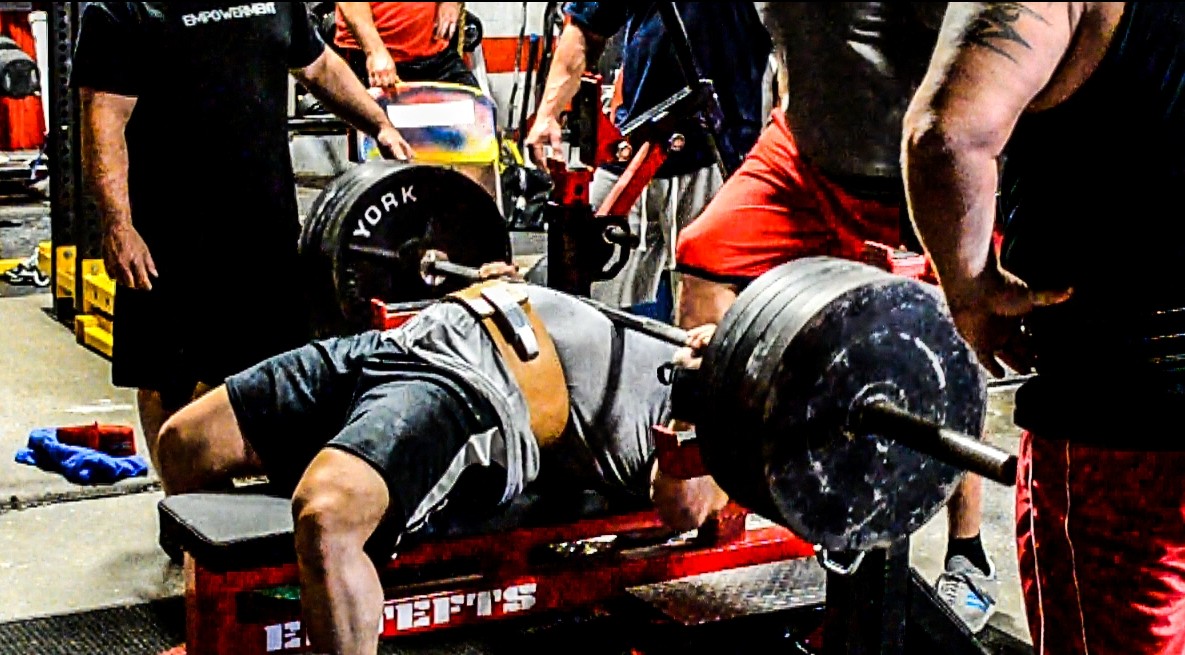
I rarely read about dynamic effort anymore. Then I wonder if that's because conjugate/concurrent/Westside training is not as popular as it once was due to raw lifting. (By the way, the terms conjugate, concurrent, and Westside often get exchanged and used incorrectly in my opinion, but you all know what I'm talking about. For argument's sake, I'm just going to say conjugate) Regardless, I strongly feel dynamic work has great value in raw lifting.
For those of you not familiar with dynamic effort training, it's speed work for your squat, bench press, and deadlift. The percentages used for the lifts are in the neighborhood of 50-75% of your max. You can also use the accommodating resistance of bands and or chains in that percentage. The squat is usually done off of a box and the set/rep scheme is usually 8 sets of 2. The bench press is 8 sets of 3. The deadlift is not used a lot for dynamic work, but when it is it's done for approximately 8 sets of 1 and because the volume is lower the percentage should be kept on the higher end.
There are four very important aspects of dynamic effort that should never be forgotten. First, the reps need to be fast. Do not sacrifice form for ego. When I first started implementing dynamic effort work into my programming, my raw bench was in the mid 500's. I tried to start at around 275 lbs and the reps looked awful. I ended up having to drop down to 185 lbs which was much lower than the prescribed percentage. It didn't matter, it was ugly and not fast. However, within about a year's time, I was using 365 lbs with bands for speed work which pushed me up to my first 600 lb raw bench in competition.
The second point to remember is, dynamic effort gives you a lot of rep work. Do not take your form for granted simply because the weight is lower. Another consideration is, if you are actually following conjugate training you will probably be using a lot of specialty bars and exercises for your max effort work. With that, you are not getting a lot of rep work on the traditional lift. Dynamic effort work will solidify form good or bad, so make it good.
Third, if you use dynamic effort training, treat it as important as any other aspect of your training. When I first started speed work it was an afterthought to my max effort work. I used to get all jacked up thinking about a max effort training day. Then one day I thought "Why am I not treating these dynamic effort days with as much intensity?" Damn, once I started treating these days as even more important than max training, my lifts flew up.
Fourth, dyanamic effort work will teach you how to explode through sticking points. My lockout was always the weakest part of my bench. Everyone was telling me to work on my lockout. I brutalized myself with lockout work and my bench was not making much progress. I still couldn't hit that 600 lb bench. I was always fast so I didn't think I needed to work on it. But when I focused on my speed and exploited it, I was able to blast past my lockout sticking point. Speed kills!
So where can dynamic effort fit into your programming if you are not following a conjugate program? Easy, it can be done after your main lift. I had nice success with it after my 5/3/1 work. Instead of "fsl" down sets, I have done speed work. Dynamic effort work does not have to be on its own day.
Just remember, if you incorporate dynamic work after your main lift, you have to account for it. You can't just throw it in on top of everything else you are already doing. You are going to have to take some volume out of your main work or drop some assistance. Dynamic work will take a toll and you need to recover.
As with anything else in training, don't think you can start adding dynamic effort it and your lifts will go up immediately. That's testing strength, not building it. I am a firm believer you need to give new training principals at least three months to pay dividends.
If you have never done dynamic work before, give it a shot. If you used to do it and stopped, try bringing it back. I know I will.








